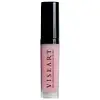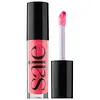What's inside
What's inside
 Key Ingredients
Key Ingredients

 Benefits
Benefits

 Concerns
Concerns

 Ingredients Side-by-side
Ingredients Side-by-side

Ricinus Communis Seed Oil
MaskingPolyamide-8
EmollientSimmondsia Chinensis Seed Oil
EmollientHelianthus Annuus Seed Wax
Skin ConditioningCopernicia Cerifera Wax
Euphorbia Cerifera Wax
Glyceryl Stearate
EmollientMica
Cosmetic ColorantButyrospermum Parkii Butter
Skin ConditioningSilica
AbrasiveOlea Europaea Fruit Oil
MaskingVitis Vinifera Seed Oil
EmollientResveratrol
AntioxidantWater
Skin ConditioningButylene Glycol
HumectantTitanium Dioxide
Cosmetic ColorantCI 77891
Cosmetic ColorantIron Oxides
CI 15850
Cosmetic ColorantBlue 1 Lake
Cosmetic ColorantCI 42090
Cosmetic ColorantRicinus Communis Seed Oil, Polyamide-8, Simmondsia Chinensis Seed Oil, Helianthus Annuus Seed Wax, Copernicia Cerifera Wax, Euphorbia Cerifera Wax, Glyceryl Stearate, Mica, Butyrospermum Parkii Butter, Silica, Olea Europaea Fruit Oil, Vitis Vinifera Seed Oil, Resveratrol, Water, Butylene Glycol, Titanium Dioxide, CI 77891, Iron Oxides, CI 15850, Blue 1 Lake, CI 42090
Ricinus Communis Seed Oil
MaskingOleic/Linoleic/Linolenic Polyglycerides
EmollientCopernicia Cerifera Wax
Simmondsia Chinensis Seed Oil
EmollientPolyhydroxystearic Acid
EmulsifyingSilica
AbrasiveSodium Hyaluronate
HumectantButyrospermum Parkii Butter
Skin ConditioningCocos Nucifera Oil
MaskingHydrogenated Castor Oil
EmollientStevioside
MaskingWater
Skin ConditioningStevia Rebaudiana Leaf/Stem Extract
MaskingCitric Acid
BufferingCaprylyl Glycol
EmollientSorbitan Oleate
EmulsifyingCI 77891
Cosmetic ColorantIron Oxides
CI 17200
Cosmetic ColorantCI 15850
Cosmetic ColorantCI 15985
Cosmetic ColorantRicinus Communis Seed Oil, Oleic/Linoleic/Linolenic Polyglycerides, Copernicia Cerifera Wax, Simmondsia Chinensis Seed Oil, Polyhydroxystearic Acid, Silica, Sodium Hyaluronate, Butyrospermum Parkii Butter, Cocos Nucifera Oil, Hydrogenated Castor Oil, Stevioside, Water, Stevia Rebaudiana Leaf/Stem Extract, Citric Acid, Caprylyl Glycol, Sorbitan Oleate, CI 77891, Iron Oxides, CI 17200, CI 15850, CI 15985
 Reviews
Reviews

Ingredients Explained
These ingredients are found in both products.
Ingredients higher up in an ingredient list are typically present in a larger amount.
This ingredient is also known as shea butter. It is an effective skin hydrator and emollient.
Emollients help soothe and soften your skin. It does this by creating a protective film on your skin. This barrier helps trap moisture and keeps your skin hydrated. Emollients may be effective at treating dry or itchy skin.
Shea butter is rich in antioxidants. Antioxidants help fight free-radicals, or molecules that may harm the body. It is also full of fatty acids including stearic acid and linoleic acid. These acids help replenish the skin and keep skin moisturized.
While Shea Butter has an SPF rating of about 3-4, it is not a sunscreen replacement.
Shea butter may not be fungal acne safe. We recommend speaking with a professional if you have any concerns.
Learn more about Butyrospermum Parkii ButterCi 15850 is the pigment color red. It is an azo dye and created synthetically.
Azo dyes need to be thoroughly purified before use. This allows them to be more stable and longer-lasting.
This ingredient is common in foundations, lipsticks, and blushes. This color is described as brown/orangey red.
It has many secondary names such as Red 6 and Red 7. According to a manufacturer, Red 6 usually contains aluminum.
Learn more about CI 15850Ci 77891 is a white pigment from Titanium dioxide. It is naturally found in minerals such as rutile and ilmenite.
It's main function is to add a white color to cosmetics. It can also be mixed with other colors to create different shades.
Ci 77891 is commonly found in sunscreens due to its ability to block UV rays.
Learn more about CI 77891Copernicia Cerifera Wax comes from a palm tree native to Brazil; another name for this ingredient is Carnauba Wax.
This ingredient is used to thicken texture and also leaves behind a film when applied.
Fun fact: This wax has the highest melting point of all natural waxes and low solubility.
Learn more about Copernicia Cerifera WaxRicinus Communis Seed Oil is the INCI name for castor oil.
Castor Oil helps moisturize the skin. It is rich in a fatty acid called ricinoleic acid. This fatty acid helps prevent moisture loss on the skin. This helps keep your skin soft and hydrated. Ricinoleic acid also has anti-inflammatory and pain reducing properties.
Besides hydrating the skin, castor oil is also used to hydrate hair. By keeping the hair shaft moisturized, breakage is decreased. More studies are needed to show castor oil's effective on stimulating hair growth.
Castor oil is created by cold-pressing castor seeds and then purifying the oil with heat. It was used in Ancient Egypt as fuel in lamps and to help treat eye irritation.
The term 'fragrance' is not regulated in many countries. In many cases, it is up to the brand to define this term. For instance, many brands choose to label themselves as "fragrance-free" because they are not using synthetic fragrances. However, their products may still contain ingredients such as essential oils that are considered a fragrance.
Learn more about Ricinus Communis Seed OilSilica, also known as silicon dioxide, is a naturally occurring mineral. It is used as a fine, spherical, and porous powder in cosmetics.
Though it has exfoliant properties, the function of silica varies depending on the product.
The unique structure of silica enhances the spreadability and adds smoothness, making it a great texture enhancer.
It is also used as an active carrier, emulsifier, and mattifier due to its ability to absorb excess oil.
In some products, tiny microneedles called spicules are made from silica or hydrolyzed sponge. When you rub them in, they lightly polish away dead skin layers and enhance the penetration of active ingredients.
Learn more about SilicaThis oil comes from the seeds of the desert shrub called Jojoba. It is more commonly known as jojoba oil, a non-comedogenic oil.
Jojoba oil does not contain fragrance and has many fatty-acids, making it a great soothing ingredient.
It also contains Vitamin E, a great moisturizing ingredient. Vitamin E is also an antioxidant and protects your skin against oxidative damage.
This ingredient humectant properties, meaning it helps draw moisture from the air. This helps keep your skin hydrated.
While jojoba has antibacterial properties, it is only able to kill some strains of bacteria.
Studies also show it helps in wound healing. In fact, Indigenous cultures have used jojoba as a moisturizer and to help treat burns for centuries.
Fun fact: Jojoba oil similar to natural human skin sebum, so it has a great effect on dry skin. It is also promising with helping to regulate sebum production.
Due to its fatty acid content, Jojoba oil may not be fungal acne safe. We recommend speaking with a professional if you have any concerns.
Learn more about Simmondsia Chinensis Seed OilWater. It's the most common cosmetic ingredient of all. You'll usually see it at the top of ingredient lists, meaning that it makes up the largest part of the product.
So why is it so popular? Water most often acts as a solvent - this means that it helps dissolve other ingredients into the formulation.
You'll also recognize water as that liquid we all need to stay alive. If you see this, drink a glass of water. Stay hydrated!
Learn more about WaterThis ingredient is a combination of red, black, and yellow iron oxide pigments. This combination of colors is usually found in foundation, because it results in a "skin" color.